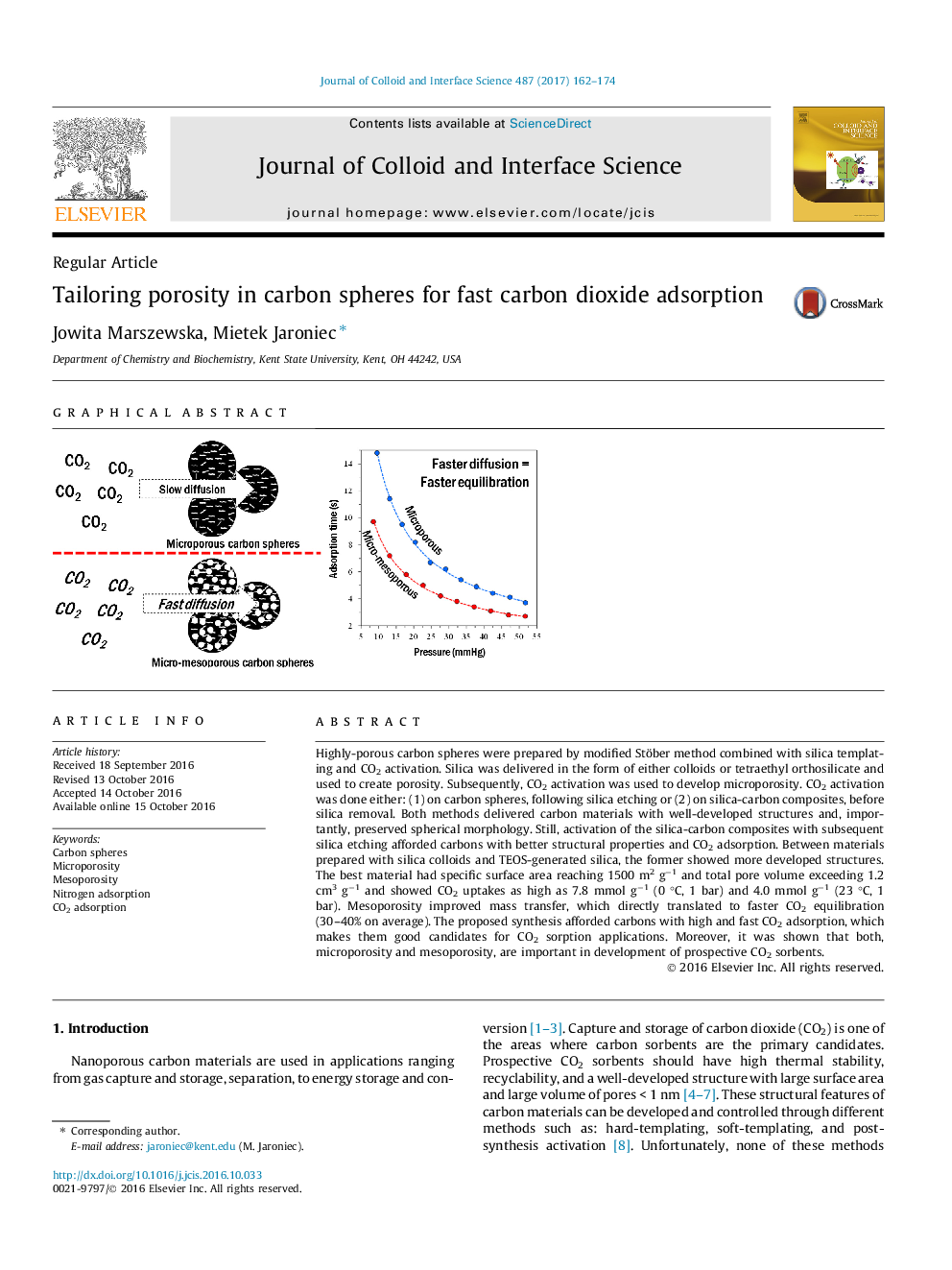| کد مقاله | کد نشریه | سال انتشار | مقاله انگلیسی | نسخه تمام متن |
|---|---|---|---|---|
| 4985406 | 1454508 | 2017 | 13 صفحه PDF | دانلود رایگان |
Highly-porous carbon spheres were prepared by modified Stöber method combined with silica templating and CO2 activation. Silica was delivered in the form of either colloids or tetraethyl orthosilicate and used to create porosity. Subsequently, CO2 activation was used to develop microporosity. CO2 activation was done either: (1) on carbon spheres, following silica etching or (2) on silica-carbon composites, before silica removal. Both methods delivered carbon materials with well-developed structures and, importantly, preserved spherical morphology. Still, activation of the silica-carbon composites with subsequent silica etching afforded carbons with better structural properties and CO2 adsorption. Between materials prepared with silica colloids and TEOS-generated silica, the former showed more developed structures. The best material had specific surface area reaching 1500 m2 gâ1 and total pore volume exceeding 1.2 cm3 gâ1 and showed CO2 uptakes as high as 7.8 mmol gâ1 (0 °C, 1 bar) and 4.0 mmol gâ1 (23 °C, 1 bar). Mesoporosity improved mass transfer, which directly translated to faster CO2 equilibration (30-40% on average). The proposed synthesis afforded carbons with high and fast CO2 adsorption, which makes them good candidates for CO2 sorption applications. Moreover, it was shown that both, microporosity and mesoporosity, are important in development of prospective CO2 sorbents.
187
Journal: Journal of Colloid and Interface Science - Volume 487, 1 February 2017, Pages 162-174
